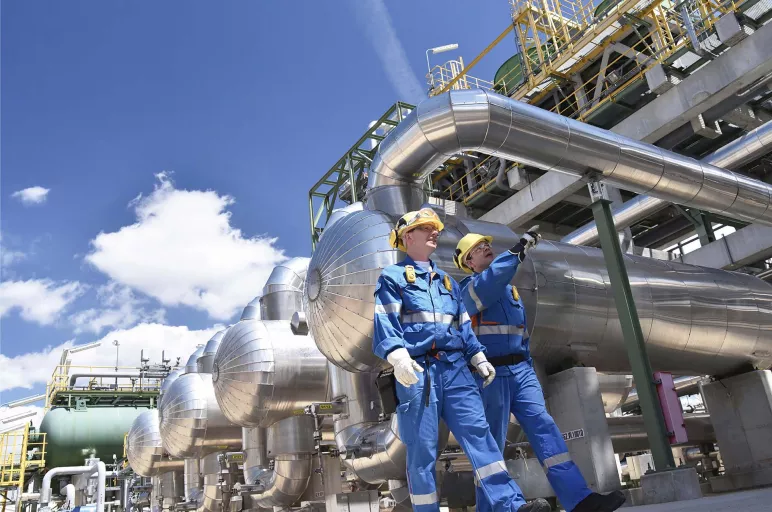
4 Ways to Optimize Oil and Gas Operations
- Digital transformation boosts operational efficiency in oil and gas, improving assets and supply and labor productivity.
- Measuring stakeholder adoption ensures effectiveness and scope for training and change management.
- Key considerations include finding experienced procurement partners, establishing clear processes and tracking impact.
May 31, 2023 | Oil and Gas 3 minutes read
Efficiency has always been a top priority for leaders in the oil and gas (O&G) sector, especially as oil prices tend to fluctuate.
However, managing vast assets and labor pools spanning numerous facilities and regions makes it difficult to effectively optimize the productivity of O&G operations.
As the global economic uncertainty and recessionary pressures loom, industry leaders must adapt quickly to ensure profits increase as a function of operating costs.
So how can executives in the oil and gas sector take an enterprise-wide approach to this challenge? By embracing digital technologies.
1. Digital Transformation – the First Step
O&G firms need to focus on digital transformation to maximize operational efficiency. Sector leaders must adopt asset management technologies to ensure both people and equipment operate at peak productivity. Digitalization will enable O&G leaders to make targeted improvements in the following areas:
- Asset infrastructure quality and uptime
- Supply base
- Labor productivity
But what does it take to ensure that adoption of digital technologies remains on track?
2. Measuring Stakeholder Adoption
Once firms are digitized, measuring stakeholder adoption will be essential to ensuring the effectiveness of new systems and technologies. If adoption lags, business teams will need additional training to ensure compliance. On the other hand, if change management principles are applied appropriately, a digital supply chain will enable O&G leaders to make significant improvements in productivity.
3. Improving Asset Infrastructure
Enterprises will need to develop robust material master data management programs where every work order and purchase order is optimized for maximum granularity. This process will support asset management tools and ERP software in enabling enterprise-wide digital visibility. Best-in-class data-driven asset management programs better equip O&G enterprises to engage in preventative maintenance, replace legacy equipment and improve planning and scheduling.
These actions help eliminate inefficiencies in the maintenance services supply chain by increasing safety, reducing Scope 1 and 2 emissions and minimizing downtime and plant shutdowns, all of which help to contain operating costs.
Also read: Managing Risks in In-House Procurement for Oil & Gas Capex Projects
4. Mastering Master Data for Supplier Management
It is also essential to trace the impact and ensure companies realize the potential value of their digital investments. They need a mechanism to track the progress and bottom-line impact of every project. The foundations for any such mechanism include a clear understanding of the organization’s current performance baseline, robust KPIs and visualization tools that enable rapid, fact-based decision making. Companies should use the material master data to map vendors to equipment. They can then use supplier scorecards by measuring asset performance and vendor service levels. They can drive efficiency by introducing specific service-level and KPI language to master services agreements along with supplier relationship management efforts, by eliminating underperformers suppliers, use performance data to negotiate better rates and terms and building strategic partnerships with top-performing vendors.
Tips to Deploy Digital Tools Effectively
To deploy digital tools effectively, oil and gas leaders will need to:
- Develop well-defined processes and procurement functions.
- Ensure data is collected, vetted, and uploaded into systems correctly.
- Engage in supplier-led training to ensure stakeholders understand the full scope and usage of the digital tools that the firm adopts.
To Sum Up
As the global recessionary pressures and economic uncertainty loom, O&G leaders must quickly adapt and maximize operational efficiency. Digitalization is a proactive action plan that provides enterprises with an enterprise-wide approach to managing vast assets and labor pools spanning numerous facilities and regions. By embracing digital solutions, businesses can make targeted improvements in productivity, reducing operating costs, and increasing profits.
Go deeper into the topic in our bulletin Unlocking Efficiency in Oil & Gas Operations: A Proactive Action Plan
Also get our Supply Chain Digital Transformation Guide



